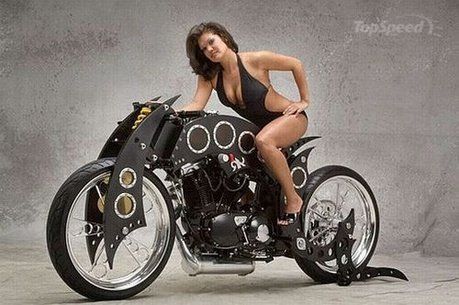 When you enjoy a fast spin on your Deltabox Yamaha or other alloy-beam hotrod, give a nod towards Marcel Giuget, the French pioneer of the cast aluminum motorcycle frame. A true visionary, he saw the complication of the lug-built frame with with its dozens
When you enjoy a fast spin on your Deltabox Yamaha or other alloy-beam hotrod, give a nod towards Marcel Giuget, the French pioneer of the cast aluminum motorcycle frame. A true visionary, he saw the complication of the lug-built frame with with its dozens of separate components, and had the inspiration to do away with all of this with a single casting, incorporating not only the frame, but the petrol and oil tanks to boot. In 1929, when he began production of his idea, such large-scale hollow alloy castings had by no means been perfected, and his efforts were bedevilled by casting porosity, cracks, cavities, etc.
of separate components, and had the inspiration to do away with all of this with a single casting, incorporating not only the frame, but the petrol and oil tanks to boot. In 1929, when he began production of his idea, such large-scale hollow alloy castings had by no means been perfected, and his efforts were bedevilled by casting porosity, cracks, cavities, etc.
Lacking infinite funds to develop this new technology, he resorted to using fillers, heat, and drying oils to create oil and fuel tight frame members, but his chassis were still prone to cracks and breakage in use, and the products of his inspiration, the MGC motorcycle (Marcel Giuget et Cie.)
 are especially rare, for their survival rate even during their normal lifespan was low. It would have been extremely difficult in 1931 to pop over to the local welder and have the mighty crack at the back of your petrol void welded up, without distorting or destroying the casting itself.
are especially rare, for their survival rate even during their normal lifespan was low. It would have been extremely difficult in 1931 to pop over to the local welder and have the mighty crack at the back of your petrol void welded up, without distorting or destroying the casting itself.MGC made roadsters and a very few racers, an example of which is shown here, fresh from restoration. The racing 250cc JAP twin-port engine is mated to a Burman 3-speed gearbox, the front forks are Bramptons, and the brakes are effective-looking 7" items with turned fins on the drums. Best of all, it's registered for the road.

When the MGC was introduced, Motor Cycling (July 27, 1929) commented;
"A curious machine has just been put on the market...The frame,engine cradle, carrier and even the petrol tank on this machine are made in tough aluminum alloy known as Alpax [made by Lightalloys of London]... lighter than aluminum [yet is] enormously stronger, whether in tension or compression.

There are two main members to the frame. The top member includes the petrol reservoir in one casting and the tank suggests a rather over-sized ostrich egg, which someone has plated and polished. On top of the tank is a particularly neat instrument-board, whilst the gear-change quadrant is mounted on the side of the casting.
The bottom member of the frame, as may be seen from our photograph, constitutes a very robust cradle for the engine, the latter being either a 350cc or 500cc JAP [which also contains the oil tank].

Upper and lower frame members are joined by two pairs of what appear to be steel drop forgings.

This machine is an extremely rare racing model from 1932, one of only two known (the other being in the collection of Bernard Salvat, and shown in the 'Art of the Motorcycle' Guggenheim show).
 Claude Lopez has meticulously restored this machine to as near original spec as he could,
Claude Lopez has meticulously restored this machine to as near original spec as he could, although I understand he had to fabricate the struts which connect upper and lower frame members, and a few other items. Details of his reconstruction can be found here, but suffice it to say, while the MGC makes a very attractive restoration project, he must have felt like grasping at air when parts were missing. Luckily aluminum welding and machining have come a long way since 1932!
although I understand he had to fabricate the struts which connect upper and lower frame members, and a few other items. Details of his reconstruction can be found here, but suffice it to say, while the MGC makes a very attractive restoration project, he must have felt like grasping at air when parts were missing. Luckily aluminum welding and machining have come a long way since 1932!








No comments:
Post a Comment